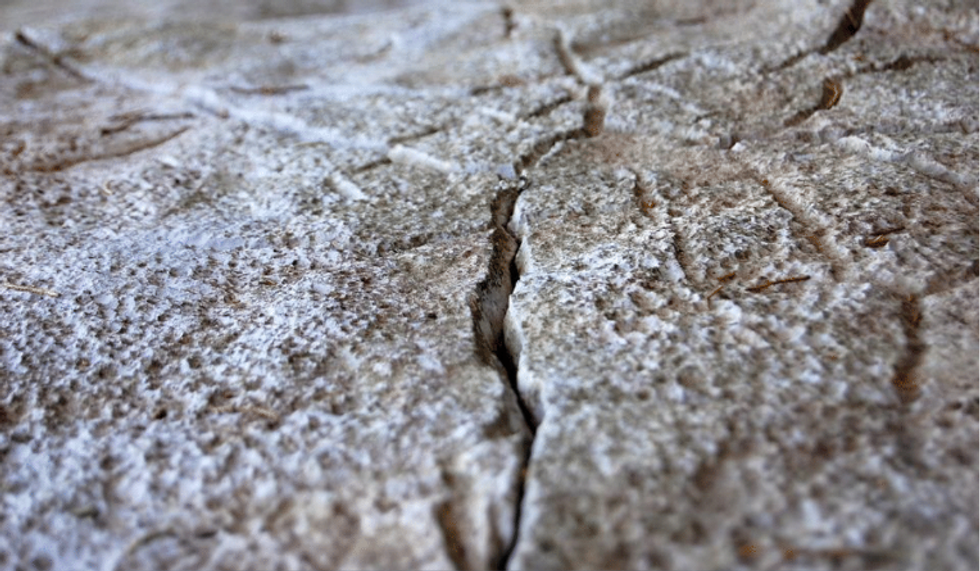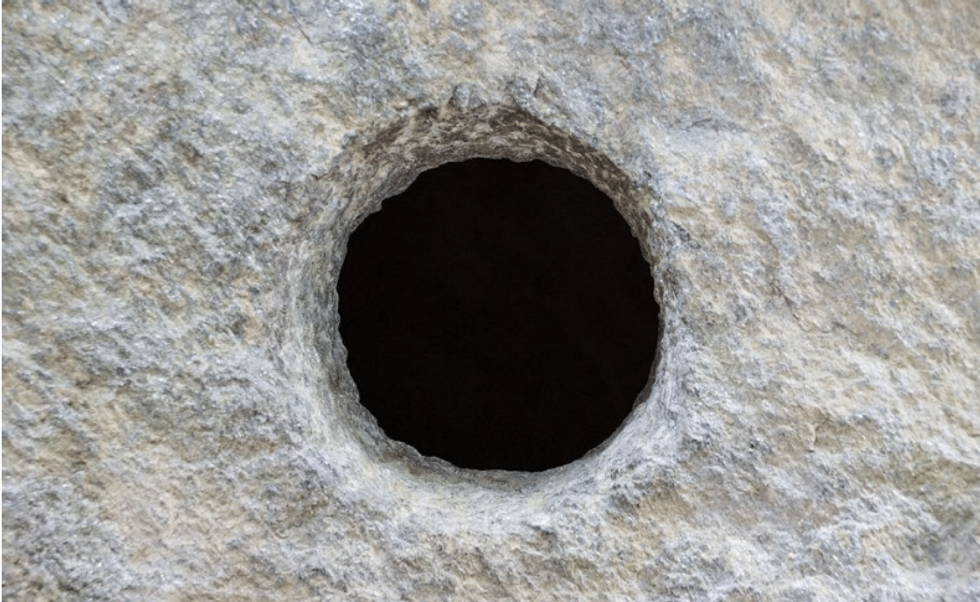Today there are a whole host of amazing technologies that can be put to use to create gravity-defying skyscrapers and execute incredibly ambitious construction projects of all kinds. From wire rope slings that can safely handle huge loads to modular designs and even 3D printing, there is almost no construction concept that cannot be brought to life in the 21st century.
Even with all these cutting-edge creations sprouting up around the world, many people find ancient architecture even more breathtaking for the very reason that modern machinery was not at the disposal of the people that built it.
So how did architects of the past put together the structures that are still standing as we speak? Here are a few of the inventive, often incredible techniques they developed that have resonated throughout history and in some cases remained relevant right up to the present day.
1. People Power
One of the more problematic but impossible to ignore aspects of ancient construction is that in many cases the immense architectural feats were only achievable through the use of pure people power. More often than not, the workers who hauled huge stone slabs into place were coerced into the action rather than being fairly treated and remunerated.
From the tens of thousands of slaves that built the pyramids of Ancient Egypt to the convicts that were press-ganged into constructing the Great Wall of China, having access to a huge, disposable workforce made it much easier to manhandle oversized lumps of masonry into position before the invention of the combustion engine.

This does mean that when gazing at ancient buildings and monuments, we should aim not to overlook the fact that a lot of people died in their creation. Unfortunately, this is still an issue in some parts of the world in the 21st century, which suggests that the end goal of a building project is often valued to a greater degree than the lives of those responsible for fulfilling it.
2. Cement & Concrete
We might think of cement, along with concrete, as a relatively modern invention, and it's certainly true that we've perfected the use of this material to make some incredible things over the past century. But by looking back into the mists of time it becomes obvious that these materials have been around for an immense span of human history, not just the last few generations.
This leads neatly into the debate about how the pyramids of Ancient Egypt were built. Conflicting theories have been proposed over the years, mostly focusing on how the vast stones used in their construction could have been quarried, transported and positioned. A relatively recent idea is that the blocks are actually made from poured concrete, not stone. This has proved both decisive and divisive since it first emerged in the 1980s as the brainchild of scientist Joseph Davidovits. It was not until 2006 that a study confirmed the partial use of this technique in the pyramids' construction.
Much more recently, in the second century of the Common Era, the Pantheon in Rome demonstrated how far the understanding of concrete had developed in the intervening eons. Architects were able to vary the density of the concrete to allow the vast, free-standing dome that sits at the heart of this building to stay safe and stable. It remains in place to this day and serves to hint at the eventual importance that concrete would accrue in all construction projects.


3. Mathematics
Even with all the materials and manpower on the planet, it would have been impossible for ancient architects to build anything that could stand the test of time without the power of mathematics at their disposal. Relatively minor projects still require a vast number of calculations to be made and measurements to be taken. For something on the scale of a pyramid, the complexity and intricacy would be mindboggling.
Trial and error was certainly involved in perfecting many of the techniques and tricks mentioned so far. However, it was the civilizations that had mastered the art of wrangling numbers to do their bidding that managed to realize their architectural ambitions with the greatest success.
Take the Mayans, for example. Their development of a complex counting system, which emerged independent of the Arabic numerals that are used globally today, enabled them not only to chart the stars and create accurate calendars but also build monuments to their beliefs which had precise designs imbued with meaning.


Meanwhile, the Ancient Egyptians deserve yet more credit in this case, with the geometry of the Great Pyramid at Giza pre-empting Pi, the Golden Ratio and the theories of Pythagoras, even if only by coincidence. The conclusion to draw is that whether ancient peoples understood mathematics innately or as a result of a cohesive system being in place, it played a central role in enabling architectural wonders to spring from the earth.
4. Stone Splitting
Being able to harness explosives and heavy machinery to extract and divide chunks of rock into workable pieces for modern projects somewhat trivializes what is on paper an incredibly arduous task. Envisioning how ancient peoples were able to cope with this is even harder, yet there is plenty of evidence to indicate how they did this.
Splitting stones to make them more manageable was not a fast process; it involved careful planning and a lot of patience. From Machu Pichu in Peru to Carnac in France, the use of tools to cut notches into stone slabs and force wedges into the cracks to create full-on fractures can be identified in long-abandoned ruins.
Of course, the cost of making a mistake with such a painstaking task was significant. This made masonry a valuable skill and one which took decades to learn. As stonework became more intricate, specialisms were developed and new approaches championed.
Stone splitting is a technique that has endured and is still practiced by enthusiasts, with videos demonstrating how a stone block weighing several tonnes can be tackled by one man with a hammer garnering millions of views.


5. Drilling
Being able to make a hole in a material is incredibly useful in a construction context. 21st-century power tools make everything from hanging picture frames to laying foundations a breeze. Yet humans were able to achieve this manually tens of thousands of years before the discovery of electricity.
Drilling by hand initially relied on friction rather than the presence of a cutting edge to bore through wood, bone, and stone. Core drilling emerged 5000 years ago during the time of the Ancient Egyptians, once again proving them to be the bastions of brilliant building ingenuity. Augers with interchangeable bits were commonplace by the time that medieval kingdoms arose in Europe, while in third-century China the creation of churn drills allowed the solid rock to be swept aside in the search for metal ores.

This ability to drill wasn't just practical but also allowed for decorative elements to be added to stonework and other structures without relying on labor-intensive carving by hand. This informed many design trends and allowed a new form of cultural expression to emerge. From basic beads and charms to minutely decorated teeth, still in the mouths of their living owners, drilling's development can be seen in various contexts.

6. Metalwork
Being able to manipulate metals made it possible to develop new construction techniques and also create incredibly ornate installations within buildings that would speak to the wealth and power of the owner. This is as true today as it was when Greek architects constructed a pyramid on the island of Keros 4500 years ago.
Recent excavations have unveiled the extent of the metalworking knowledge that the craftspeople brought to the island with them, allowing for the creation of tools made from lead and copper.
Meanwhile, many other civilizations made use of metal in a more immediately structure role. Block ties used to anchor stone slabs to one another have been found in Rome, Angkor Wat and a number of different archaeological sites worldwide.


Another thing suggested by the presence of metalwork in an ancient building is the necessity of long-distance trade and the concept of importing. A lot of these resources on which ancient architects relied, from the stone to the raw ore, were simply not available in the vicinity of the structures they were creating.
It's from this that a lot of the arguments surrounding famous monuments spring. From the pyramids of Egypt to Stonehenge in the UK, many of the most magnificent endeavors that are still with us today are seen as being far too large and complex to have been made before the invention of the iPhone.
The upshot is that conspiracy theories which seek to explain ancient architecture have sprung up to fill the gaps in our understanding that still remain. Claims of alien intervention may be entertaining to some, but ultimately they belittle the achievements of our ancestors and overlook the solid proof that human ingenuity has repeatedly toppled seemingly impossible obstacles throughout history.
















